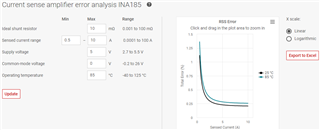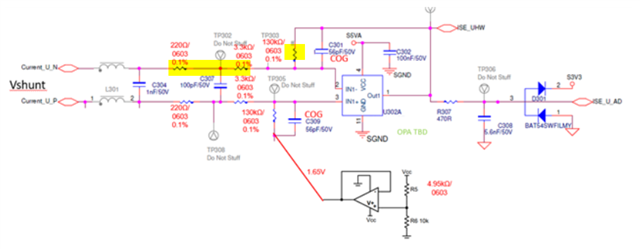Other Parts Discussed in Thread: INA4181, INA185
low side shunt current sense circuit is designed as shown as below,
design spec: low side shunt current sense/ gain=37/ max frequency=30kHz/ as less 3 output in one package/ Vin=0V~0.037Vdc( Rshunt=0.2mOhm)/ Ta_max=85C / ADC full rating=3.3V
design target: output error < 0.5% during full input range (Vos can be neglected due to software calibration)
Question:
1. what kind and part number of amplifier would be recommand ? Current-Sense Amplifier or operation amplifier? or other?
2. what is the advantage of using Current-Sense Amplifier(such as INA4180) vs operation amplifier?





